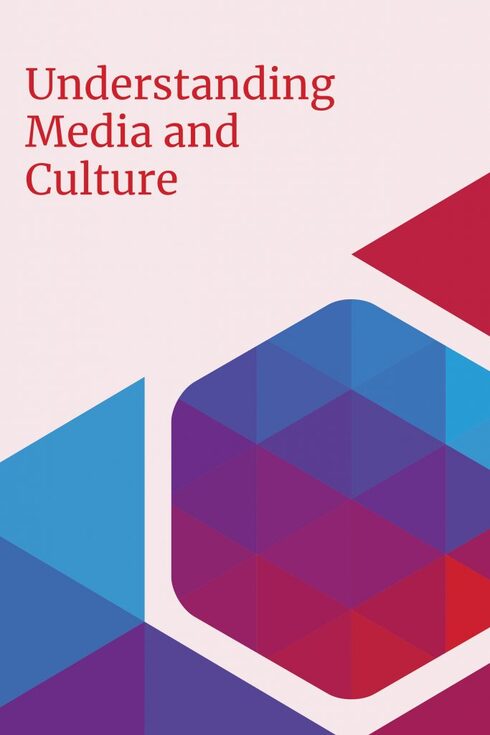 Organizational Change
by
Laurie Lewis
A comprehensive guide to essential theories and practices of change creation and implementation Organizational Change provides an essential overview to implementing deliberate and focused change through effective communication strategies. Author Laurie Lewis integrates academic rigor with real-world case studies to provide a comprehensive examination of both theoretical and pragmatic approaches to alterations and modifications of organizational structures. Emphasizing the importance of formal and informal communication in implementation of change, this text investigates methods of information dissemination and examines various channels for communicating change. Coverage of stakeholder relationships, concepts of uncertainty and resistance, assessing change outcomes, and more provides readers with a solid foundational knowledge of change dynamics in organizations. Extensively revised and updated, this second edition provides new case studies on topics such as design of input solicitation, and current research in areas including the persuasive effects of sidedness or inoculation, and socially supportive communication. Improved pedagogical tools, streamlined organization of topics, and additional charts, graphs, and images reinforce efficient presentation of material and increase reader retention and comprehension. Examines empirical, theoretical, and conceptual approaches to strategic communication during organization change Explores key elements of change, appropriate communication strategies, and outcome evaluation methods Presents adaptive and programmatic strategic implementation models Provides studies of real-world companies and actual research on organizational change Debunks popular myths and clarifies misunderstandings of research and theory on implementation of change Demonstrates how Individuals, groups, and entire organizations can create change and influence implementation. Organizational Change provides a thorough survey of the communication and implementation strategies, methods, and conceptual foundations of change in public and private sector organizations, suitable for undergraduate and graduate study and practitioners with interest in complex change implementation.
Organizational Change
by
Laurie Lewis
A comprehensive guide to essential theories and practices of change creation and implementation Organizational Change provides an essential overview to implementing deliberate and focused change through effective communication strategies. Author Laurie Lewis integrates academic rigor with real-world case studies to provide a comprehensive examination of both theoretical and pragmatic approaches to alterations and modifications of organizational structures. Emphasizing the importance of formal and informal communication in implementation of change, this text investigates methods of information dissemination and examines various channels for communicating change. Coverage of stakeholder relationships, concepts of uncertainty and resistance, assessing change outcomes, and more provides readers with a solid foundational knowledge of change dynamics in organizations. Extensively revised and updated, this second edition provides new case studies on topics such as design of input solicitation, and current research in areas including the persuasive effects of sidedness or inoculation, and socially supportive communication. Improved pedagogical tools, streamlined organization of topics, and additional charts, graphs, and images reinforce efficient presentation of material and increase reader retention and comprehension. Examines empirical, theoretical, and conceptual approaches to strategic communication during organization change Explores key elements of change, appropriate communication strategies, and outcome evaluation methods Presents adaptive and programmatic strategic implementation models Provides studies of real-world companies and actual research on organizational change Debunks popular myths and clarifies misunderstandings of research and theory on implementation of change Demonstrates how Individuals, groups, and entire organizations can create change and influence implementation. Organizational Change provides a thorough survey of the communication and implementation strategies, methods, and conceptual foundations of change in public and private sector organizations, suitable for undergraduate and graduate study and practitioners with interest in complex change implementation.
ISBN: 9781119431244
Publication Date: 2019-03-06
 Understanding Media and Culture
by
University of Minnesota Libraries (Adapted by)
Understanding Media and Culture: An Introduction to Mass Communication was written to squarely emphasize media technology. The author believes that an introduction to mass communication text should be a compelling, historical narrative sketching the *ongoing evolution* of media technology and how that technology shapes and is shaped by culture — and that is what he set out to deliver with his new textbook.
Today's students are immersed in media technology. They live in a world of cell phones, smart phones, video games, iPods, laptops, Facebook, Twitter, FourSquare, and more. They fully expect that new technology will be developed tomorrow. Yet students often lack an historical perspective on media technology. They lack knowledge of the social, political and economic forces that shape media technology. This is not knowledge for knowledge's sake. It is knowledge that can help them understand, comprehend, appreciate, anticipate, shape and control media technology.
With this focus, Understanding Media and Culture becomes an appropriate title. Indeed, the title has particular significance. Marshall McLuhan's Understanding Media is a key text in media studies. Written in the 1960s, Understanding Media was the subject of intense debates that continue to this day. Its central message was that the technology of media — not their content — was their most important feature. In a typically pithy phrase, McLuhan said, "The medium is the message." The title, Understanding Media and Culture: An Introduction to Mass Communication, situates the introductory text in a large, engrossing theoretical conversation.
The goal is to adopt a textbook that will support and complement your teaching of this course. Understanding Media and Culture: An Introduction to Mass Communication will support an engaging and interesting course experience for students that will not only show them the powerful social, political and economic forces will affect the future of media technology, but will challenge students to do their part in shaping that future.
Understanding Media and Culture
by
University of Minnesota Libraries (Adapted by)
Understanding Media and Culture: An Introduction to Mass Communication was written to squarely emphasize media technology. The author believes that an introduction to mass communication text should be a compelling, historical narrative sketching the *ongoing evolution* of media technology and how that technology shapes and is shaped by culture — and that is what he set out to deliver with his new textbook.
Today's students are immersed in media technology. They live in a world of cell phones, smart phones, video games, iPods, laptops, Facebook, Twitter, FourSquare, and more. They fully expect that new technology will be developed tomorrow. Yet students often lack an historical perspective on media technology. They lack knowledge of the social, political and economic forces that shape media technology. This is not knowledge for knowledge's sake. It is knowledge that can help them understand, comprehend, appreciate, anticipate, shape and control media technology.
With this focus, Understanding Media and Culture becomes an appropriate title. Indeed, the title has particular significance. Marshall McLuhan's Understanding Media is a key text in media studies. Written in the 1960s, Understanding Media was the subject of intense debates that continue to this day. Its central message was that the technology of media — not their content — was their most important feature. In a typically pithy phrase, McLuhan said, "The medium is the message." The title, Understanding Media and Culture: An Introduction to Mass Communication, situates the introductory text in a large, engrossing theoretical conversation.
The goal is to adopt a textbook that will support and complement your teaching of this course. Understanding Media and Culture: An Introduction to Mass Communication will support an engaging and interesting course experience for students that will not only show them the powerful social, political and economic forces will affect the future of media technology, but will challenge students to do their part in shaping that future.
 Communication in the Real World
by
University of Minnesota Libraries (Adapted by)
Communication in the Real World: An Introduction to Communication Studies overviews the time-tested conceptual foundations of the field, while incorporating the latest research and cutting-edge applications of these basics. Each chapter will include timely, concrete, and real-life examples of communication concepts in action.
Communication in the Real World
by
University of Minnesota Libraries (Adapted by)
Communication in the Real World: An Introduction to Communication Studies overviews the time-tested conceptual foundations of the field, while incorporating the latest research and cutting-edge applications of these basics. Each chapter will include timely, concrete, and real-life examples of communication concepts in action.
 Small Group Communication: Forming & Sustaining Teams
by
Jasmine R. Linabary
Small Group Communication: Forming & Sustaining Teams
by
Jasmine R. Linabary
 Language and Culture in Context - A Primer on Intercultural Communication
by
Robert Godwin-Jones
The text introduces some of the key concepts in intercultural communication as traditionally presented in (North American) courses and textbooks, namely the study of differences between cultures, as represented in the works and theories of Edward Hall and Geert Hofstede. Common to these approaches is the prominence of context, leading to a view of human interactions as dynamic and changeable, given the complexity of language and culture, as human agents interact with their environments.
Language and Culture in Context - A Primer on Intercultural Communication
by
Robert Godwin-Jones
The text introduces some of the key concepts in intercultural communication as traditionally presented in (North American) courses and textbooks, namely the study of differences between cultures, as represented in the works and theories of Edward Hall and Geert Hofstede. Common to these approaches is the prominence of context, leading to a view of human interactions as dynamic and changeable, given the complexity of language and culture, as human agents interact with their environments.
